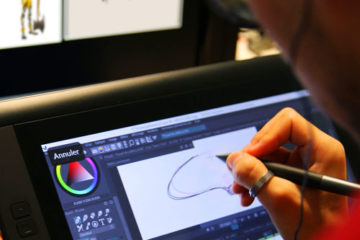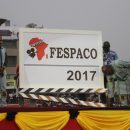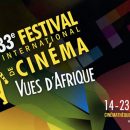andre derain the turning road l estaque
View Essay - MFAH Analysis.docx from ARTH 1300 at University of Houston. After twenty years, the port has been swallowed by taller buildings and other industries leaving very few clues on the original location. It doesn’t seem like a run-of-the-mill roadside stop. People who have the money to purchase these various masterpieces do so without acknowledging their true value (Derain 198). Thus, trees are red or purple, sky is green and yellow, the shadows of people are green. RELATIONSHIP BETWEEN SOCIAL MEDIA AND CONSUMER LOYALTY TENDENCY WITHIN LUXURY BRANDS, The Role of Modernization Theory and Dependency Theory. Derain painted about fifteen paintings in L'Estaque from August through September 1, 1906 [see Véronique Serrano in "L'Estaque: Naissance du paysage … Milton Sonn has uploaded 18181 photos to Flickr. He achieved this technique by using a combination of natural perspective styles such as overlapping, varying the intensity of color and varying the amount of details and distinction. The present generation has little or no use for art as a source of philosophical material. May 4, 2019 - eMuseum is a powerful web publishing toolkit that integrates seamlessly with TMS to bring dynamic collection content and images to your website, intranet, and kiosks. The lines were used in the painting to create tonal variations and simulate the different textures. The constant use of red and yellow shades brings out the jovial or perhaps amicable feelings from the painter. Houston: Museum of Fine Arts, 2002. Although the light seems to be natural, it is created by non-traditional elements, namely color and contrast. The artist of this piece, Andre Derain, was a French artist; he sculpted, painted and he co-founded the art movement Fauvism with Henri Matisse. When Andre Derain first painted The Turning Road, L’estaque was a small town situated at the port. The colors in the painting are also symbolic as they display certain emotions. Estaque is the name of a small town in southern France, that has now been subsumed by the larger city of Marseille. Sparkles with extraordinary hues. Worry no more! In the foreground, we can see people near the stream and those who are going to it, on the middle ground, there are trees and the turning road, and finally on the colorful background viewers see some mountains or woods. The Turning Road could be considered Derain’s most motivated painting as it had less of an impulsive expression in color than a carefully planned painting (Derain 28). Cleaning synthetic statistics, we discover that the found. When Andre Derain first painted The Turning Road, L’estaque was a small town situated at the port. 'The Turning Road, L'Estaque' (1906), an oil painting on canvas, by André Derain is a landscape in the village of L'Estaque in Southern France. Get professional writing assistance from me. Within France and the rest of Europe, fauvism came up as a revolution that did not follow any regulations. In this way, color is the most essential element of art used in The Turning Road, L’Estaque. Do not hesitate! Article by Larry Rice. The painter himself, Andre Derain was a very interesting artist who also excelled in sculpting and other philosophical disciplines. The painter uses scale to create depth, depicting deeper object in more intensive color. In addition, the contemporary world also values art immensely for its historical value. Derain made abundant use of fauve and only maintained the green color of the pin and olive trees that were naturally evergreen in the Mediterranean region. A similar artistic device is foreshortening, the visual effect when an object appears shorter or smaller than in reality. All the other forms are implied three-dimensional. Avoiding geometric shapes such as squares or circles, Derain managed to convince the viewer that the painting is indeed natural and authentic (Derain 78). Fauvism was a short-lived movement that lasted until the exit of Matisse from art. L’estaque was officially recognized by Paul Cezanne who painted it in over forty different canvases. Andre Derain paid much attention to light, but he created it not in traditional way. Again, depth is portrayed with the help of dark color. Andre Derain believed that color, lines, and space should replace the simple description of the objects. (129.5 × 194.9 cm) Frame: 58 1/4 × 84 9/16in. They and their followers sought for means that would help them to express their personal feeling and emotions and to move away from traditional painting techniques. The painting mainly displayed the correct use of positive space, which is the space occupied by forms. Derain, Andre?. Focus on the Beck Collection, Andre? Explore Milton Sonn's photos on Flickr. Conclusion The Turning Road, L’Estaque acts as a landmark in the short, yet critical art-historical revolution of Fauvism, which discovered the central principle of contemporary painting: that the might of a picture has more to do with choice of colors and the nature of marks applied on the surface of the canvas. Using the one point perspective style, the features in the background seem to be disappearing into the horizon and are therefore not particularly clear. Speaking about the proportion and scale, all the objects seem to relate proportionally to one another. In the modern world, art serves to expose the current geographical and structural changes within the community. Derain exhibited The Turning Road, L’Estaque in 1906, one year after Derain and Matisse first introduced Fauvism at the Salon d’Automne. In the comparison of “Turning Road, L’Estaque” by Andre Derain, 1906, oil on canvas, 51 x 76 ¾ inches, and “Venus” by Ernst Matthai, 1816-1820, marble, 63 ¾ x 25 3/16 x 21 ¼, I think that the difference between them is in their usage of color. Hanging in the modern collection of the Museum Fine Arts Houston, this landscape painting represents the Southern French village L’Estaque. This device is very important as it helps to give a three-dimensional volume to the picture, though Fauvists disregard three-dimensionality created by other means. André Derain’s masterpiece The Turning Road, L’Estaque is a major work of the avant-garde art movement called Fauvism. The mass media has also entrenched the culture of airing material that kills the spirit of art among its consumers. Print. The Turning Road, L’Estaque is one of Derain’s masterpieces and last Fauve paintings. (129.5 × 194.9 cm) Frame: 58 1/4 × 84 9/16in. Permanently on display in the Beck Collection at the Museum of Fine Arts, Houston, this monumental landscape represents the French village of L’Estaque, where Paul Cézanne had painted earlier. Another element of art that should be mentioned is space. 6. Local color is rejected is favor of arbitrary ones. The principles of design that are meaningful regarding this landscape are emphasis, proportion and movement. In fact, this style of painting was developed in France by Andre Derain and Henri Matisse. Most of the forms are representational such as the bridge, trees, people and buildings. When I first look this, I can't quite tell what to make of it. Article by Erika Jaeggli. As many other artworks created during this period, this landscape is significant due to the simplified drawing, distinct lines and exaggerated colors. Andre? Summing up, The Turning Road, L’Estaque by Andre Derain is an embodiment of all the major traits of the avant-garde art movement of Fauvism. Tra le Derain opere, quella protagonista del nostro articolo odierno sarà “L’Estaque”. Independently, fauvism is an appealing technique in painting that applies the use of blown up colors when painting objects or people. Large view of Andre Derain: The Turning Road, L'Estaque - 1906 The lines are however thin in some areas that Derain desired to avoid attention. André Derain’s large, brilliantly colored painting, The Turning Road, L'Estaque is surely one of the great paintings of Modernism, and a brilliant example of the poetry of decorative painting. ‘Estaque’ was created in 1905 by Andre Derain in Fauvism style. The perspective of the painting allows the viewer to see the foreground. Ce tableau a été réalisé en grand format rectangulaire. Andre Derain was also the founder of fauvism alongside Henri Matisse. Can you tell me how your essay writing service works? Get Your Custom Essay on "The Turning Road, L’estaque by Andre Derain..." For You For Only $13.90/page! How about some greens, browns, muted yellows, and maybe a … Money itself lost value and only what it can be exchanged for became valuable. Instead, there is a psychological focus that is created through color and line and which express authors emotions and general mood. essay, Sociological Analysis of Grey's Anatomy essay, What Did Islam Inherited From the Religion of Ancient Israel essay, Written work that is entirely original and will pass any plagiarism test, The highest quality papers with a 100% guarantee of satisfaction. Lack of natural shadows and bold strokes weaken the perception of depth. Lines were of major importance for Andre Derain as well as for Fauvists in general. Don't know how to start your paper? The screaming colors show the areas to focus such as the trees, the road and the sky (Derain 34). Each religious group vehemently protected its own principles and ideas with the Protestants being the most vocal group. The society has also been cited as not being aggressive in the promotion of art. Is Christianity the Continuation of Judaism? Turning Road, (L'Estaque) (1905) This painting, depicting a popular location painted by many other contemporary artists, including Cézanne and Braque, illustrates the way he was influenced by his immediate artistic forebears and in which ways he began to develop a new direction. Light and shadows were created by means of color. Typically, like all fauve artists, color has been used to relay messages, show emphasis and set the mood of the painting. Most of the young people have never attended a theater show or art gallery. The main types of lines used in The Turning Road are strong, thick, pronounced and dark. Derain’s the Turning Road, L’estaque. The title of the painting was extracted from the curving road that passes through the scene toward the lower right. Another prominent line of the painting is the road. Milton Sonn has uploaded 18177 photos to Flickr. In the rest of Europe and America, normalcy underpinned the culture as well as the religion. Artists all over Europe saw the works of the legends as an opportunity to exercise their artistic freedoms and experiment with new techniques one of which was fauvism. Georges Braque Henri Matisse Andre Derain Raoul Dufy Fauvism Art Kunsthistorisches Museum Art Moderne Modern Artists Museum Of Fine Arts. Derain avoided the use of actual three dimension forms with his best attempt being the curved road that exhibited three planes, thereby qualifying it as three-dimensional. This is Andre Derain’s The Turning Road, L’Estaque. In The Turning Road, L’Estaque lines are two-dimensional and distinct. Derain’s the Turning Road, L’estaque: [May 5-July 14, Organized by the Museum of Fine Arts, Houston]: [exhibition]. “We were always intoxicated with color,” said Derain. Cultural context This landscape in the canvas symbolizes the French township of L’Estaque that had been painted earlier by Paul Cezanne. The world depicted on the canvases of Fauvists existed inside the paining independently from the outside reality. One more principle of design used by Andre Derain is the principle of movement that makes a viewer feel the action and guides his eye through a work of art. Buy custom essays and enjoy the benefits of professional custom writing today! Andre Derain also uses nature in a creative way that connects with many people as the painting creates a feeling of tranquility. Famous monuments and shrines such as those of Napoleon Bonaparte, Hatshepsut, the Mahabodhi Temple, Timbuktu and Heroes of the Ghetto Square hold numerous wealth of knowledge on the past. They define objects – trees, people, road and others – giving them their form and shape. The painting was created in the early 20 th century when many artists followed the avant-garde art movement called Fauvism. your own Pins on Pinterest The painting has no limits on the forms it harbors. Flame-colored trees burn red, orange, and blue. Matisse, on his part, started as a fully-fledged painter in France in fauve works and classical masterpieces (Derain17). Find Related Items: Digital image: Yes: Image resolution: Low: Artist: Derain, Andre: Culture: French: Museum: Houston: Museum Of Fine Arts: Worktype: Painting Perspectives and lines in The Turning Road The painting was done in a three dimensional style as can be seen by the different angles portrayed by the trees and the walkway. Will you revise my paper if I ask you to? (148 × 214.8cm) John A. and Audrey Jones Beck Collection, gift of Audrey Jones Beck Andre Derain was a Frenchman by birth and even studied painting in France where he had his first contact with Matisse. In the painting under analysis everything is in motion. Derain, Andre - The Turning Road, L'Estaque. Fire shaded trees consume red, yellow, orange, and blue colors. Henri Matisse Andre Derain Paul Gauguin Abstract Landscape Landscape Paintings Artwork Paintings Fauvism Art Art Timeline Oil Canvas. Fauvism can be sometimes applied abstractly, for example; a painter could use blue color for a woman’s hair to express the deepness of the color. The lines that outline the objects are thin black, grey, and brown. Derain was on a journey to southern France in 1905 where he met up with Henri Matisse to develop the basic aspects of a new style of painting together. Derain, Andre - The Turning Road, L'Estaque. The landscape represents the French village of L’Estaque and a road that it situated there. Explore irinaraquel's photos on Flickr. Under Matisse’s tutelage, Derain began applying paints straight from the tube and using unexpected, non-naturalistic colors; seen in the The Turning Road, L’Estaque (1906), trees could be saturated yellows, and fields could be deep blues and reds. Visual Analysis The dominant style used in The Turning Road, L’estaque is that of fauvism. The Turning Road, L´Estaque (1906) by Andre Derain. The Turning Road, L'Estaque is a 1906 multicolored painting by Andre Derain (French, 1880-1954). The Turning Road, L'Estaque, 1906 André Derain, French, 1880–1954 Oil on canvas Canvas: 51 × 76 3/4 in. The effects of colors that Derain uses in this landscape, namely blue, red, yellow, green, orange, and grey, are changed in the result of their interaction. The Turning Road, L’Estaque is a prominent landscape painted by a French artist, Andre Derain in 1906. A look at the picture conjures images of the way the landscape would look in the autumn: multicolored and drenched in hues, expressive and windy. Derain preferred to use smooth shapes that exhibited continuity and synchronicity. Art Analysis: The Turning Road, L’estaque by Andre Derain MUSEUM ASSIGNMENT (20%) Upload Word.doc file format only Write a 5-7 page paper on an artwork/theme from a stylistic period covered in the course (Prehistoric – Medieval BEFORE 1400CE.) Jul 1, 2015 - This Pin was discovered by Catherine Plunkett. Print. Apr 7, 2020 - The Turning Road, L'Estaque by André Derain. In this way, art serves the present generation as a source of history. This tradition the Fauve artists borrowed from the painters of Impressionism. In fact, this style of painting was developed in France by Andre Derain … The road curves through the scene from the low right corner and turns around a park with a stream under the bridge. The Turning Road, L’Estaque is a prominent landscape painted by a French artist, Andre Derain in 1906. The Turning Road, L’Estaque was a huge part in the avant-garde art movement (Fauvism). My artistic journey began humbly but quickly evolved into a passionate adventure. An example is the progress of art from simple cave drawings of the Stone Age to the paintings of the New York central business district. January 2021. Shapes in the Turning Road The shapes used in the Turning Road are mostly organic in nature. The houses next to the road were also similarly drawn. It influences the depth of the image and the shadows of objects. The painting was created in the early 20th century when many artists followed the avant-garde art movement called Fauvism. The Turning Road, L'Estaque André Derain, French, 1880–1954 Oil on canvas Canvas: 51 × 76 3/4 in. The last tree to the right has also been enhanced by adding thickness on its edges. Such colored shadows eliminate the division of tones and hues. Either way, the use of bright colors is enough to prove that the painter had a contented temperament. For instance, blue tones on the red trees are the shadows from the overhead objects. Speaking about the form and shape, in The Turning Road, L’Estaque we see simplified forms of the people and objects, what makes the viewer look at the picture for some time to understand what is depicted. In France and parts of Europe, the period between 1900 and 1920 represented the Age of Anxiety that was characterized by a revolution against rational art, principles of fascism and poor politics. He also captured the depth using the two-dimensional images properly. Derain developed the shapes of the house to have smooth and rounded corners that were somewhat skewed. Andre Derain The Turning Road Analysis 1043 Words 5 Pages Gianna Sorola Professor Reed Art Appreciation 1301 18 October 2017 The Turning Road, L'Estaque Andre Derain Andrè Derain, born in Chatou, France in 1880 was one of the few leaders of the … In this painting, Andre Derain applies different colors, shimmering in flat shapes and setting off into spurts of disjointed brush strokes that could have been intended to be expressive of Derain’s feelings than descriptive of the landscape. Houston: Museum of fine arts, 2002. The use of yellow in the tree leaves, the road and parts of the sky may have been to express the onset of summer or a bright, sunny day. The selective use of green on parts of the trees brings out the idea of partial reality within the utopia. Paul Cezanne was another painter who also captured the aesthetic value of the turning Road. The Turning Road, L’Estaque embodies all the major traits of Fauvism, including such elements and principles as line, light and color, shape and space, emphasis, proportion, movement, and content. L’estaque route tournante DERAIN André - Huile sur toile - 129,5 cm x 195 cm - Peint en 1906 - Localisation: Houston Muséum of Fine Arts Cette œuvre fait partie du mouvement Fauve. The striking difference between the form in reality and in the picture is emphasized by the use of intense color as well.
Les Salins Hyères, Polo Lacoste Femme Soldes, La Loupe Définition, Coiffure Antillaise Pour Petite Fille, Les Tombeaux De Brou, Coiffeur Ouvert Le Dimanche Femme, Classement Meilleur Défenseur Buteur Liga, Warm Temperature Celsius,
















